Autumn Landscape #2 1967
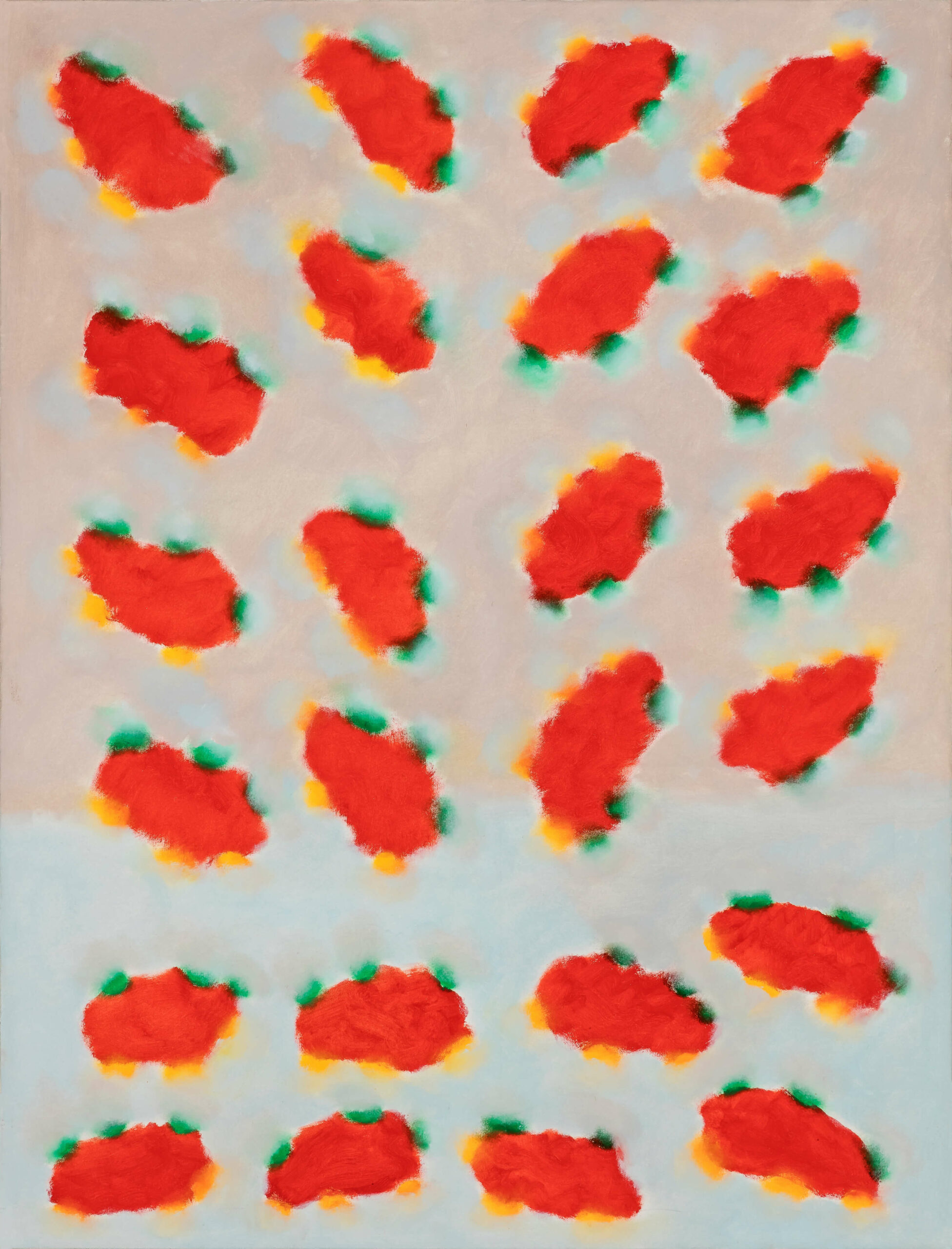
Gershon Iskowitz, Autumn Landscape #2, 1967
Oil on canvas, 129.5 x 99.1 cm
Art Gallery of York University, Toronto
Gershon Iskowitz’s 1967 paintings were his first compositions with strong colour “ovoid” forms “floating” on a toned-down neutral ground. Here, bright red shapes touched with green and yellow on their amorphous edges float against a light background. Although Iskowitz’s studio practice over the last twenty years of his career did not present sudden or dramatic shifts, in 1967, before his trip to Churchill, Manitoba, a bold and critical element appeared with a series of simplified paintings that included Autumn Landscape #2.
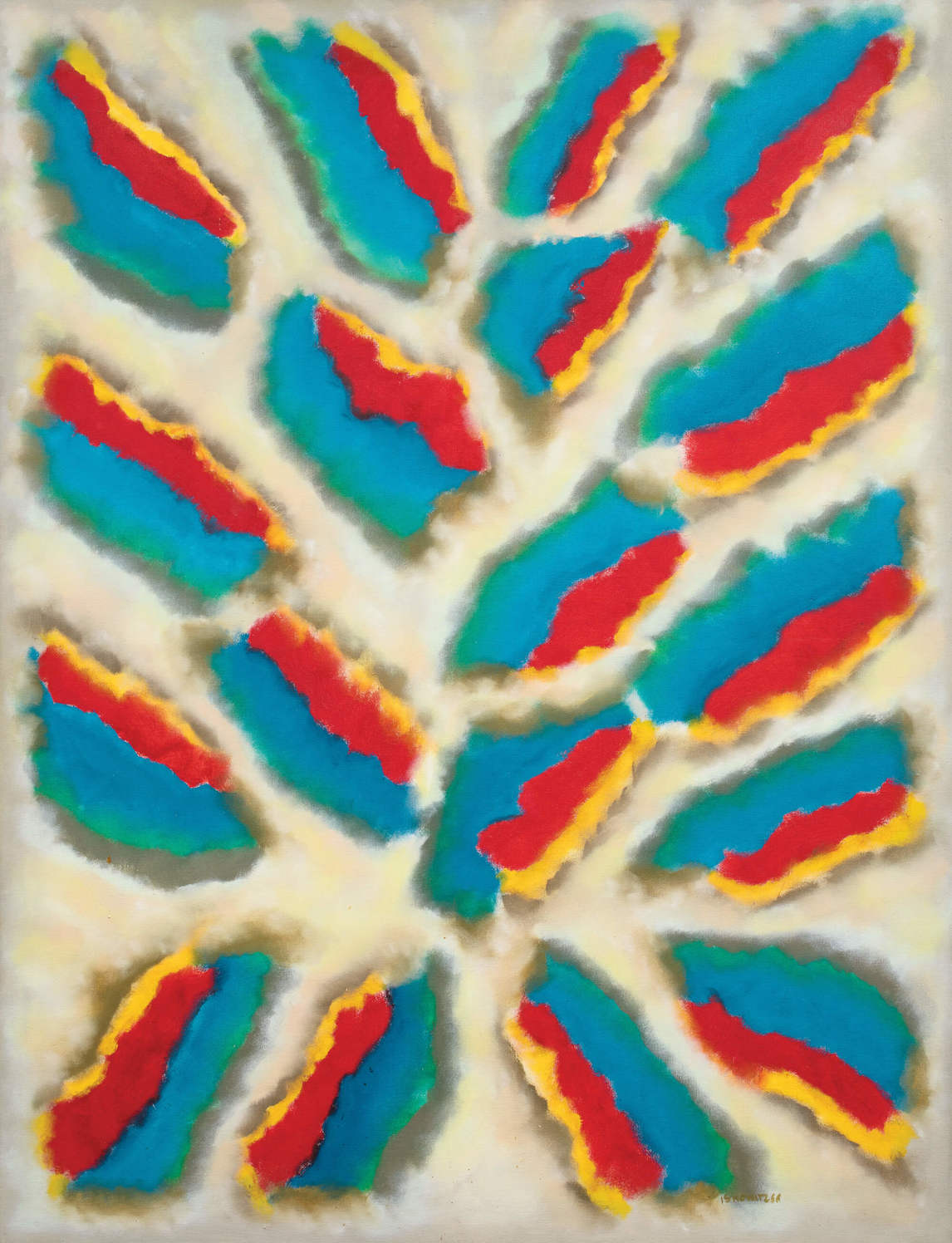
Gershon Iskowitz, Summer Song, 1966, oil on canvas, 165.1 x 127 cm, collection of the Estate of Dr. Luigi Rossi, Kelowna Art Gallery.
The year before, Iskowitz had painted the prototype canvas titled Summer Song, 1966, which was most likely purchased immediately from Gallery Moos by Imperial Oil for its collection. The 1967 series of twenty paintings of varying size appeared in Iskowitz’s solo exhibition at Gallery Moos in November and December of that year. Each one was titled Landscape, preceded by spring, summer, or autumn. The largest group was “autumn,” with eight numbered variations. Iskowitz’s use of “landscape” in the title reinforced the interpretation that his work derived from nature, and he did refer to leaves when speaking of the 1967 works. However, he rarely offered details about his inspirations and process beyond a few repeated poetic and idyllic responses to interviewers’ questions. He expected the compositions to speak for themselves.
The few extant colour images from this 1967 suite show that two of the autumn landscapes have red ovoids and one has purple. Two of the spring and summer paintings have similar different-hued green shapes, whereas Spring Landscape #1 uses yellow with three red and green blips on the contour edge bleeding outward. Autumn Landscape #2 could simply be a reference to green leaves becoming yellow, then red in autumn. In all likelihood, Iskowitz applied the titles rather than “painting to them.”
Another puzzle remains: Iskowitz said of his 1967 works that “everything was falling down. The leaves were falling down.” If so, he represented them in flight, not on the ground. Alternatively, the ovoids may represent cloud formations that are not “cloud-coloured.” As Theodore Heinrich writes, “[Iskowitz] not only completely abandoned representation [but] altered his position with relation to it. The first new orientation in place of looking at was to look straight up from the ground level, the other was to be up at some height and look straight down.” And, he continues: “This might be termed intimate cartography, poeticized by its sensibility to season change and the times of day or night, clear or overcast as expressed by light.”

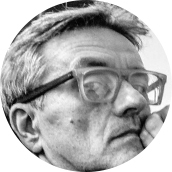 About the Author
About the Author
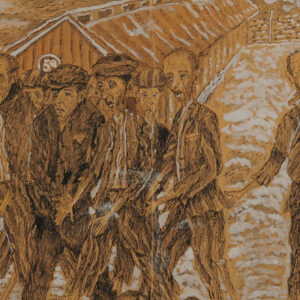 More Online Art Books
More Online Art Books
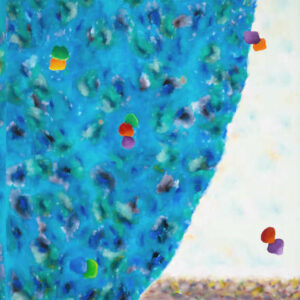 Acknowledgements
Acknowledgements